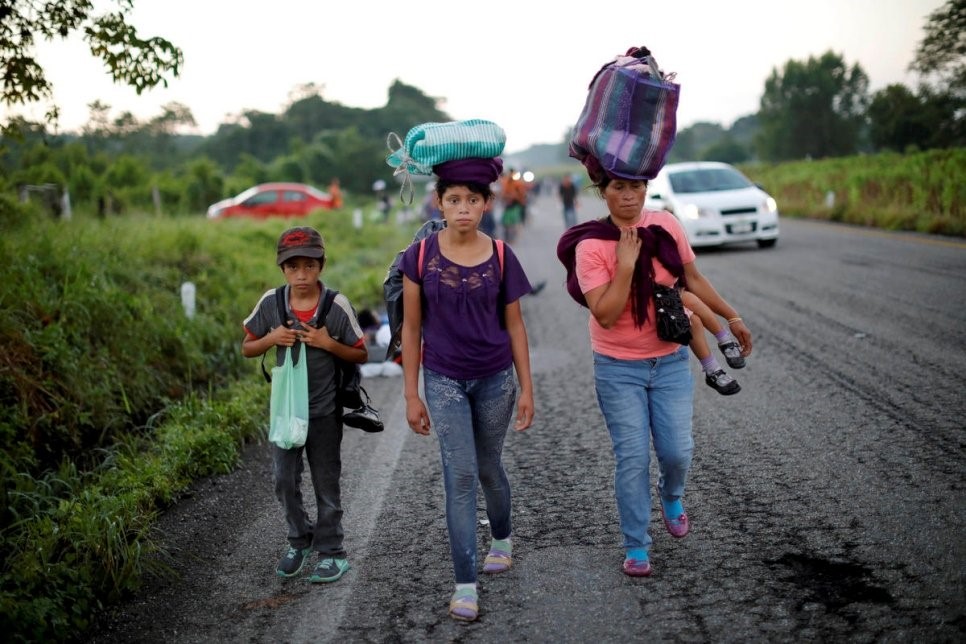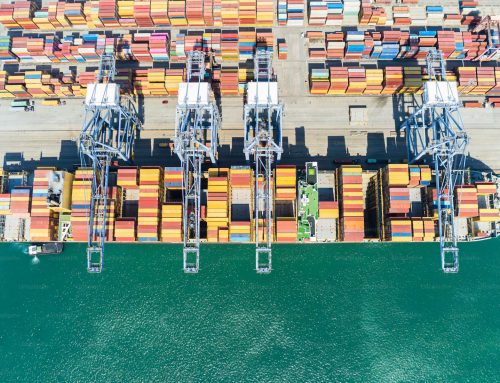22.12.2020
By Russell Harpring, PhD Candidate at the HUMLOG Institute
“Quédate en casa”, or “Stay at home”, is the mantra of the information campaign led by the Mexican Government to curb the COVID-19 infection rates. In Mexico, over 1.1 million COVID-19 cases have been confirmed, with an estimated 127,000 deaths as of December 2020. Masks are required in public spaces, hand and shoe sanitizer is given at the entrance to any building, signs to remind people to respect social distancing are everywhere. The Secretary of Health advocates that, “if we can isolate the virus, we can beat it”. But for families and refugees with greater threats than COVID-19, remaining at home is not always an option.

Throughout Latin America, borders have been closed and movement restricted. Though the reality is that a large percentage of the Latin American population lives on daily wages. This creates a contradiction: leave home to earn a living wage, or “quédate en casa” to protect against the virus but forego an income to buy food, water, and other basic needs. In this light, despite the pandemic, asylum seekers from Honduras, El Salvador, Haiti, Cuba, and Venezuela have continued to arrive at the Mexican border. For many, Mexico is a transit country on the way to the United States. For others, Mexico is the destination country. For the Mexican Government, this has created a dilemma: how do you protect public health while also allowing refugees to seek asylum in the country?
The problem is not an easy one to address. Violence spikes in Latin America, fueled by drug trafficking and high rates of poverty, force thousands to flee from their homes each year. Typically, when migrants cross the border into Mexico, they must be held at a detention center until their identity and refugee status can be verified. The detention centers are often crowded with limited facilities, which created concerns when the COVID-19 pandemic started.
To tackle this project, Mexico’s refugee office, COMAR (Comisión Mexicana de Ayuda a Refugiados), has teamed up with UNHCR, the UN Refugee Agency. One of the first solutions was to expand the number of registration centers and allow for remote processing of information. Now, instead of centralized locations for registration and sheltering, there are over 100 various shelters throughout Mexico. While this has helped maintain social distancing guidelines, it has also created a logistical challenge to distribute supplies throughout the country.
When COVID-19 began amplifying in Mexico, shortages of personal protection items (PPE) such as masks, gloves, and hand sanitizer began to occur. Like much of the global supply chain for these items, demand spiked, and supply lagged behind. Procuring these items became a challenge for UNHCR, facing shortages and long lead times from global suppliers. Then there was the problem of importing items and distributing to over 100 locations for beneficiaries throughout the country.
As the commercial sector began to restock PPE items, the supply team made a critical decision to rethink the way items with fragile supply chains are procured and delivered to beneficiaries. Instead of lengthy global supply chains, the supply team began focusing strategically on local procurement and delivery services. These partnerships provide the opportunity to be more agile and communicate directly with suppliers. Soon, the problem of delivering numerous and various supplies to over 100 locations became manageable and traceable.
In addition, UNHCR in the Americas is using cash-based interventions (CBIs) to provide another form of assistance and protection to persons of concern. CBIs involve the use of cash transfers to beneficiaries so they may decide and prioritize their needs such as food, rent, and basic commodities, then purchase what is needed accordingly. A major function of CBIs in Mexico is to provide beneficiaries the ability to rent a flat or property, rather than stay in a camp or settlement. This helps them to “quedarse en casa” and keep a safe social distance, as the government recommends. In this way, the organization offers social protection and inclusion for persons who may be without a social safety net and vulnerable to COVID-19.
The world is in the middle of another spike in COVID-19 cases. While supply chains remain vulnerable to disruptions for high demand items, humanitarian organizations are adapting to the current situation and providing flexible modes of support to those who are most vulnerable. A consortium of humanitarian organizations in Mexico, led by UNHCR, plan to expand CBI coverage throughout the country to reach even more beneficiaries. Agencies such as UNHCR are used to operating in complex and difficult situations, and while COVID-19 is a new situation, it is being dealt with in the same manner as all humanitarian emergencies – with an intent to utilize all available resources to meet the needs at hand of the people they work with.
Russell Harpring is a PhD student at the Hanken School of Economics and is currently conducting research with UNHCR in Mexico related to cash-based interventions, local procurement, and coordination for last-mile delivery.
Disclaimer: the views expressed herein are those of the author(s) and do not necessarily reflect the views of the United Nations.




